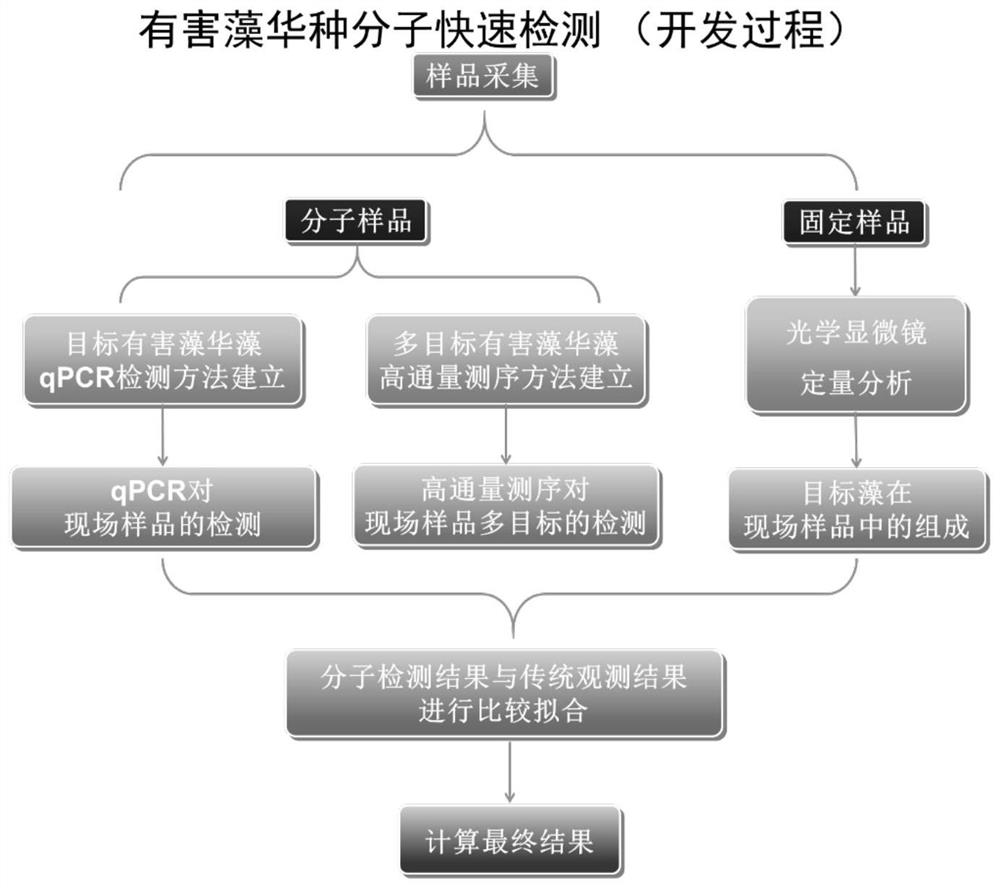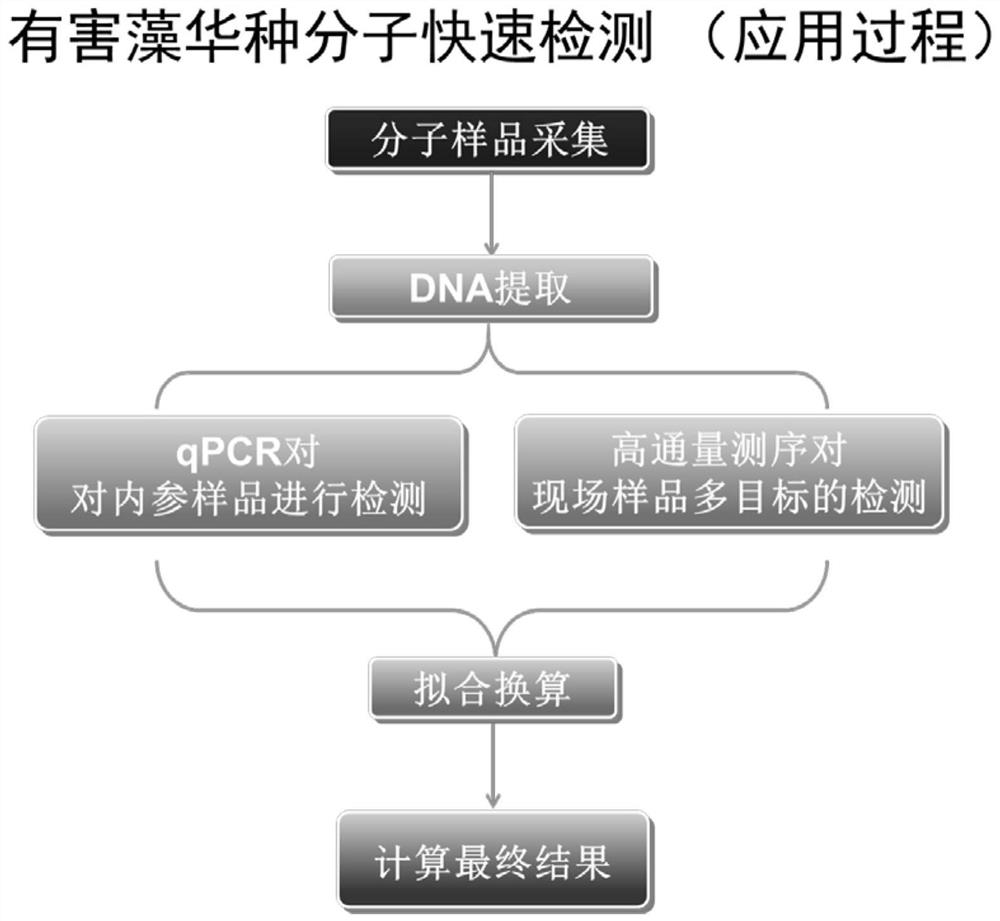Rapid detection method for harmful algal bloom species molecule based on high-throughput sequencing
A detection method and high-throughput technology, which can be used in the determination/inspection of microorganisms, biochemical equipment and methods, etc., can solve the problems of large morphological changes, variable morphological changes, laborious and other problems, and achieve the effect of optimizing quantitative differences
- Summary
- Abstract
- Description
- Claims
- Application Information
AI Technical Summary
Problems solved by technology
Method used
Image
Examples
Embodiment Construction
[0026] The invention will be further described below with reference to the accompanying drawings and specific embodiments.
[0027] Such as Figure 1 to 2 As shown, a rapid detection method based on high-throughput sequencing, a variety of hazardous algae, including the steps of:
[0028] 101) Screening Standard Line Steps: Collecting the Objective Availability from the corresponding sea area, separation and purification by capillary separation and cultured under control conditions, and confirmed the morphological analysis of the algae plant. Among them, the algae gamdage is determined from the molecular evolution analysis angle to determine the classification of the collocation of the algae gavay by searching the species information from the GenBank database.
[0029] 102) Gene Information Acquisition Steps: Amplification Step 101) The RDNA sequence collected by the algalvanic water sample is performed, and the homologous retrieval and alignment analysis are performed, and the high...
PUM
 Login to View More
Login to View More Abstract
Description
Claims
Application Information
 Login to View More
Login to View More - R&D
- Intellectual Property
- Life Sciences
- Materials
- Tech Scout
- Unparalleled Data Quality
- Higher Quality Content
- 60% Fewer Hallucinations
Browse by: Latest US Patents, China's latest patents, Technical Efficacy Thesaurus, Application Domain, Technology Topic, Popular Technical Reports.
© 2025 PatSnap. All rights reserved.Legal|Privacy policy|Modern Slavery Act Transparency Statement|Sitemap|About US| Contact US: help@patsnap.com


